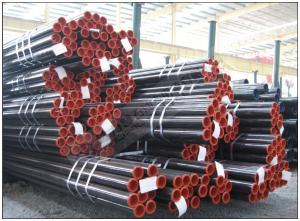Number 5 Rebar: Reinforcing the Framework of Construction
In the world of construction, the term ‘rebar’ is synonymous with strength and durability. It’s the unsung hero of the industry, silently holding up the structures we rely on every day. But what exactly is rebar, and why is it so crucial to the construction process? Let’s dive into the world of rebar, specifically Number 5 Rebar, and explore its role in reinforcing the framework of construction.
The Backbone of Buildings
Rebar, short for reinforcing bar, is a steel bar with ridges that is used to strengthen concrete. It’s designed to resist tensile stress in contrast to the concrete, which is excellent at handling compression. Number 5 Rebar, with a diameter of approximately 16mm, is a common size used in various construction projects. It’s the backbone of buildings, bridges, and other infrastructures, providing the necessary support to withstand the test of time and the forces of nature.
A Closer Look at Number 5 Rebar
When you look at a piece of Number 5 Rebar, you’ll notice its ribbed surface. This isn’t just for aesthetics; the ridges increase the bond between the rebar and the concrete. The American Society for Testing and Materials (ASTM) sets the standards for rebar, ensuring that it meets the required specifications for strength and durability. Number 5 Rebar is made from high-quality steel, which is both ductile and strong, allowing it to bend without breaking and to withstand significant loads.
The Role of Rebar in Construction
Rebar plays a vital role in the construction process. It’s used in a variety of applications, from residential homes to commercial buildings and large-scale infrastructure projects. Here’s a breakdown of its role:
– Foundations: Rebar is used in the foundation to provide support and prevent cracking.
– Columns and Beams: In load-bearing structures, rebar is essential for distributing the weight and ensuring stability.
– Floor Slabs: It helps to prevent cracking and provides support to the slab.
– Reinforced Walls: Rebar is used to reinforce masonry walls, increasing their strength and resistance to seismic forces.
The Installation Process
Installing rebar is a meticulous process that requires precision and care. Here’s a step-by-step look at how it’s done:
1. Planning: Engineers and architects plan the placement of rebar based on the structure’s design and load requirements.
2. Cutting: Rebar is cut to the required lengths using specialized tools.
3. Bending: If needed, rebar is bent to fit specific angles or shapes.
4. Placement: Rebar is carefully placed in the formwork, ensuring it’s correctly positioned.
5. Securing: Rebar is secured in place with ties or chairs to maintain its position until the concrete sets.
6. Inspection: Before the concrete is poured, a final inspection is conducted to ensure everything is in order.
The Importance of Quality Control
Quality control is paramount when it comes to rebar. Poor quality rebar can lead to structural failures, putting lives at risk. Regular inspections and testing are conducted to ensure that the rebar meets the necessary standards. This includes visual inspections, mechanical testing, and even chemical analysis to check for impurities.
The Future of Rebar
As construction techniques evolve, so does the use of rebar. Innovations in materials and methods are being developed to improve the efficiency and effectiveness of rebar usage. For example, the use of advanced computer modeling can help predict how rebar will perform under different conditions, leading to more precise and safer construction practices.
The Human Element
Behind every piece of rebar and every construction project, there are skilled workers and dedicated professionals. Their expertise and hard work are what truly bring the rebar to life, transforming it from a simple steel bar into a critical component of our built environment.
In Conclusion
Number 5 Rebar is more than just a material; it’s a symbol of the strength and resilience that goes into every construction project. It’s the silent partner that works tirelessly to ensure our structures stand strong. As we continue to innovate and push the boundaries of what’s possible in construction, the role of rebar will only grow in importance. So, the next time you walk by a building or cross a bridge, take a moment to appreciate the unseen work of Number 5 Rebar, reinforcing the framework of our world.

